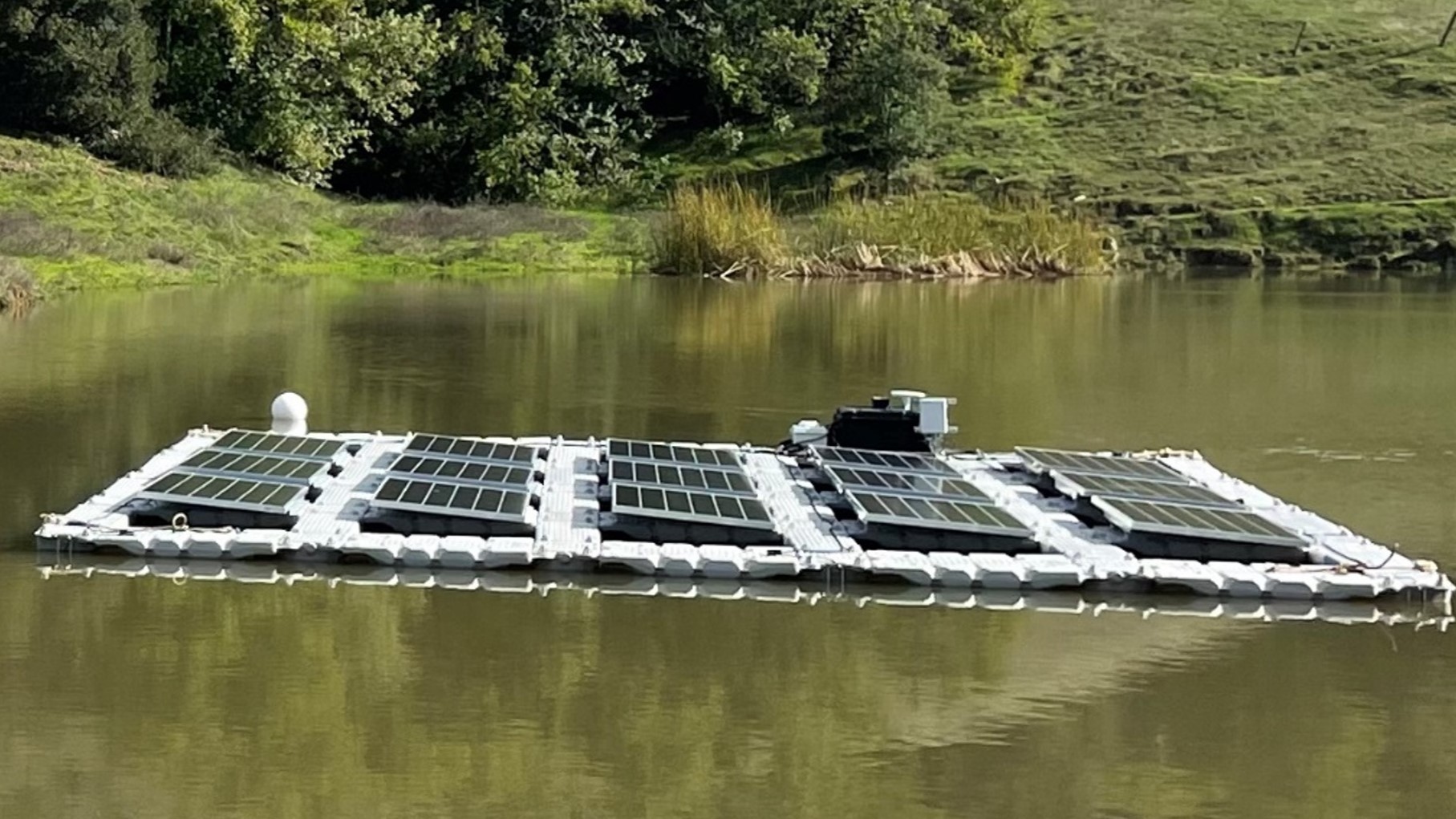DOE Vouchers Foster Collaboration between National Laboratories and Public Innovators
PNNL ocean engineer James McVey collaborates with U.S. company on floating solar technologies

A model array of a floating mooringless solar array designed through a voucher program between PNNL and a United States company. The model simulates environmental impacts of waves, wind, and thruster forces.
(Model by James McVey | Pacific Northwest National Laboratory)
Floating solar arrays that use underwater motors to rotate and track the sun across the sky in bodies of water to produce more energy. That is the vision of a United States company, tapping into the research expertise of Pacific Northwest National Laboratory (PNNL) to combine the strengths of the sun and the open space of the water to test new solar technologies for renewable energy.
PNNL Ocean Engineer James McVey is teaming with entrepreneurs at Noria Energy through the American-Made Solar Prize, a voucher program that facilitates companies to partner with the Department of Energy (DOE) national laboratories to accelerate innovation and advance technologies in renewable energy.

"Noria Energy wants to rethink the moorings that typically hold an array in place, in part because mooring installation and operations get exponentially more expensive as the arrays get bigger and water gets deeper. When you have a 300 by 300-foot array, that is a lot of lines," said McVey. "So, their goal is to use underwater thrusters on the array to help keep it in position and rotate it with the sun instead."
McVey’s research measures waves and water to analyze the energy potential for power developers, a process called resource characterization. McVey and fellow researchers feed that information to a PNNL modeling team to support ocean engineering designs. They also support software development and modeling design tools.
Through the DOE voucher program, Noria Energy was able to collaborate with McVey to develop a model to simulate thruster and environmental forces that could impact the floating solar array system in the real world, from wind, waves, and water current.
“We used one of our design tools for engineering support work, a dynamic simulation software,” said McVey. “Essentially, we built a model of the system and gave it certain environmental conditions one could expect in the aquatic environment to understand some of the design challenges.”
The company is continuing work with PNNL through a subsequent voucher project supported by the DOE Solar Energy Technologies Office (SETO) and will explore the use of the model to help design a system that controls multiple solar islands on a single body of water.
“The DOE wants to make expertise and capabilities at national labs available to small companies that may not have access to high-quality research relevant to systems they are interested in,” said McVey. “Floating solar is a budding and fairly new industry. I think it is particularly fun to work on a voucher because you get to team on a project with a company that immediately contributes to a critical part of the work that they are invested in.”
DOE’s Office of Technology Transitions is launching the Technology Commercialization Fund (TCF) Open Voucher Call. This new opportunity offers a total of $2.1 million in funds to innovators to work with national labs to translate technologies into real-world applications. Learn more about the TCF Open Voucher Call and consider opportunities to work with research experts at national laboratories.
Published: September 3, 2024